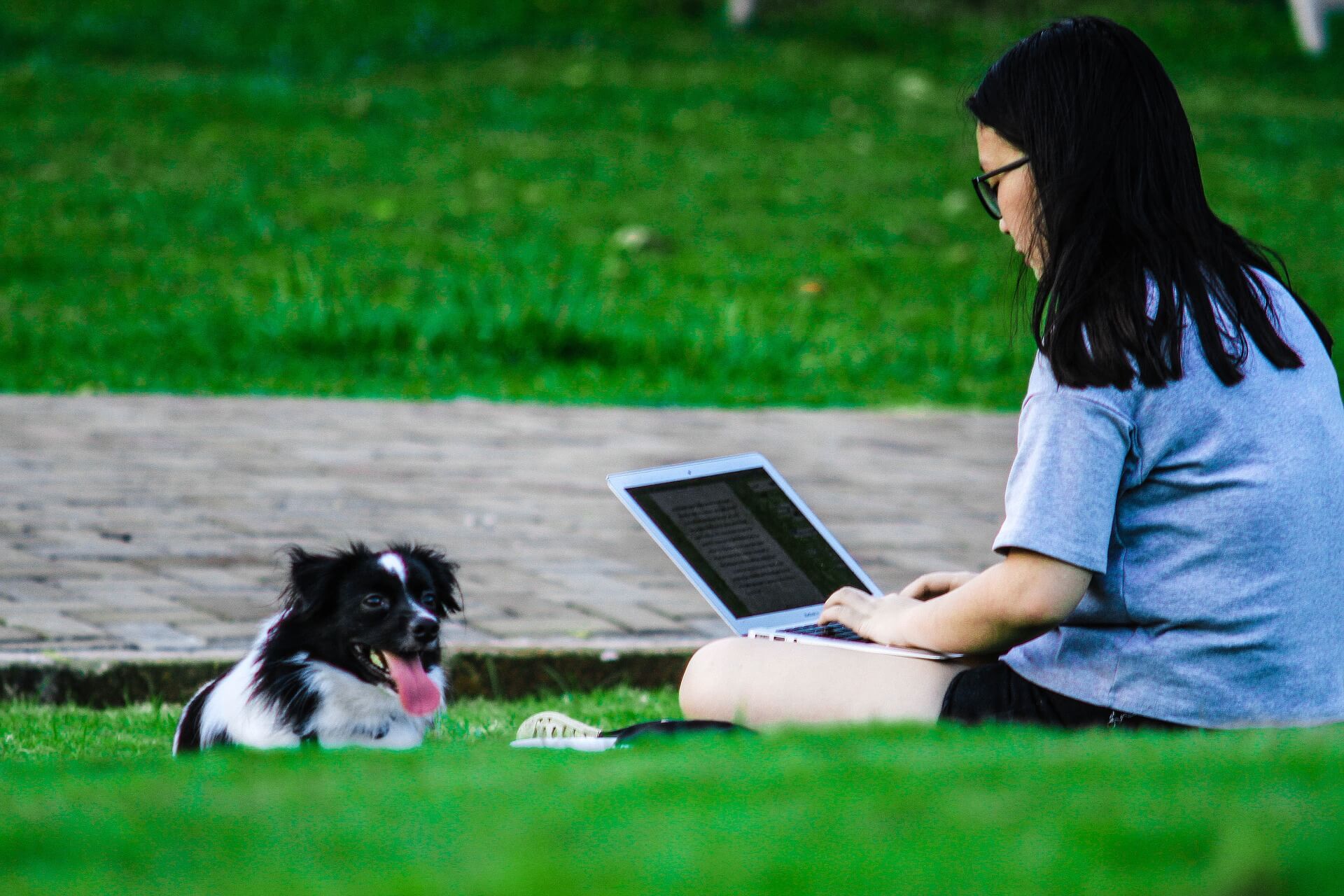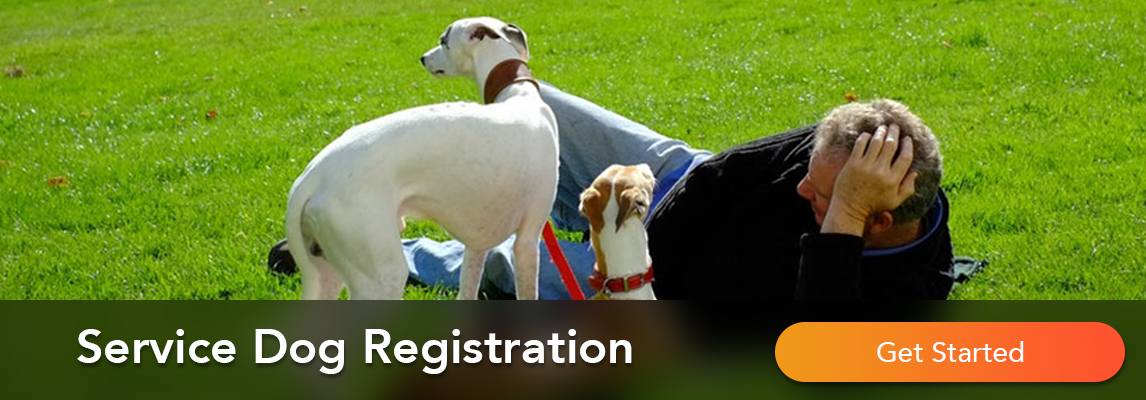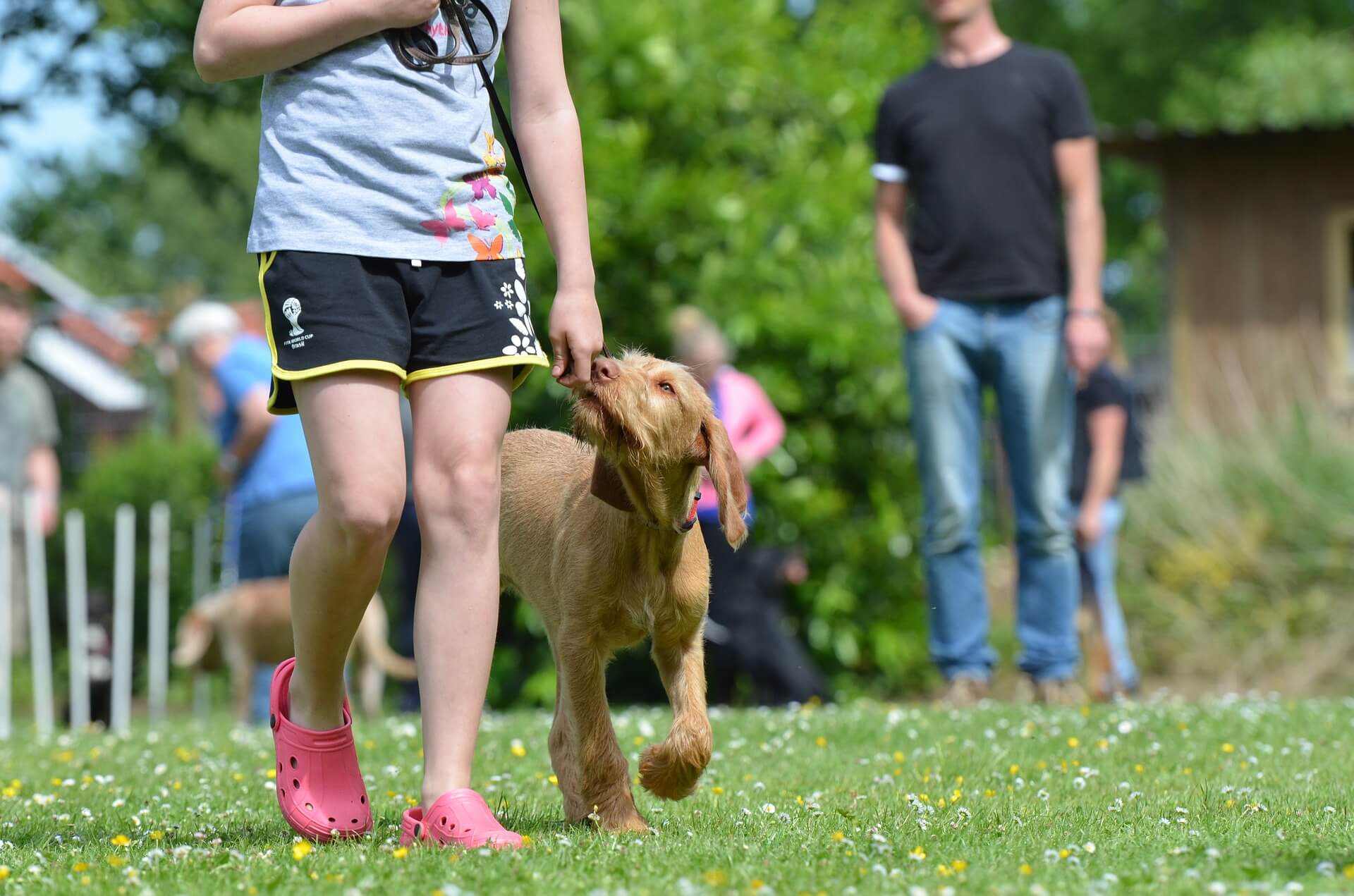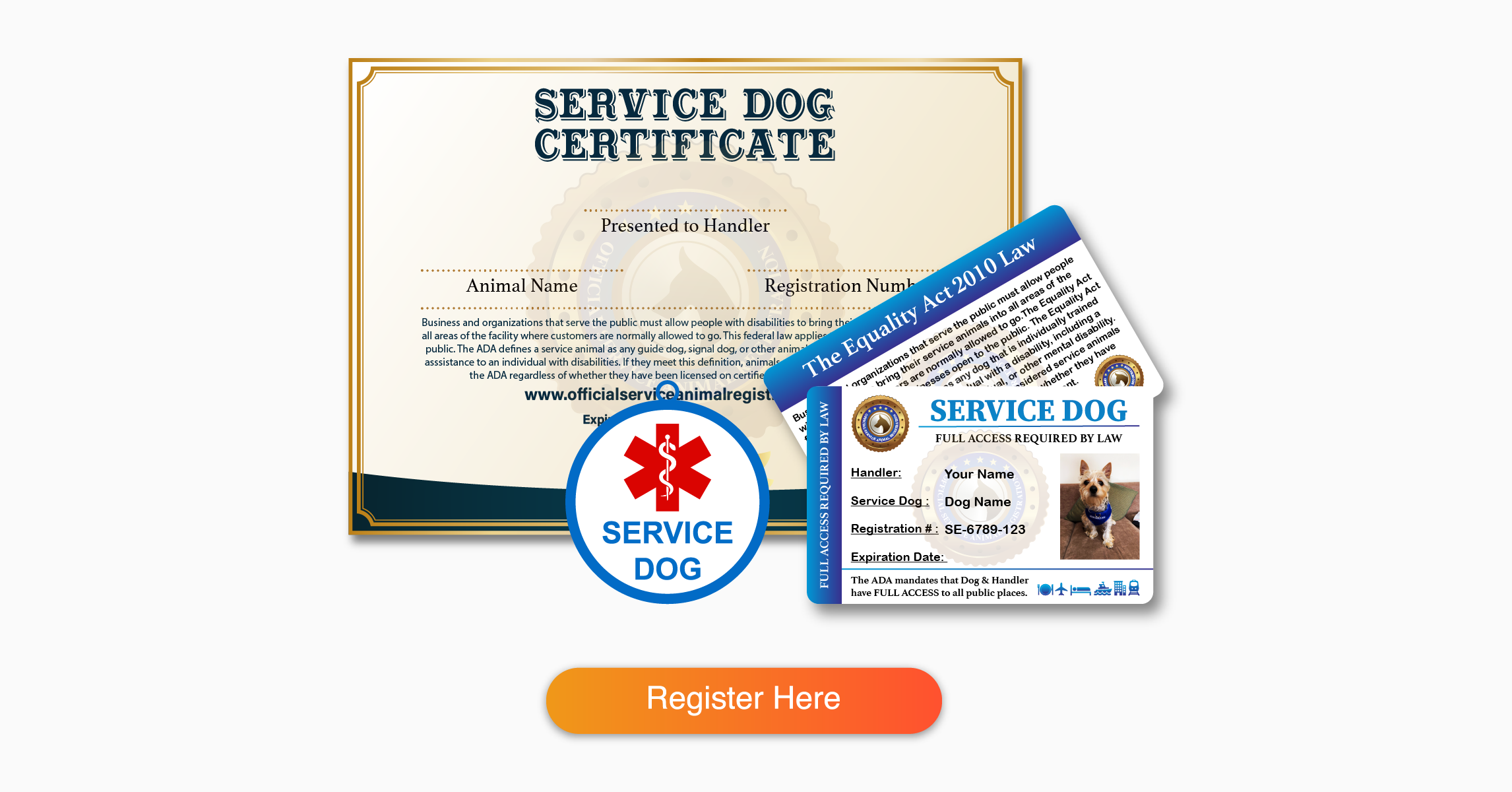Can A School Deny A Service Dog

Service dogs provide therapeutic benefits to individuals with disabilities in different age groups. In recent years, the question has arisen as to whether students are eligible to get service dogs, equally more and more than service dogs visit schools and stay in classrooms, canteens and dormitories. While some support the school attendance of service dogs due to the benefits they bring, others oppose it because they see teachers, classmates, roommates and people with allergies faced with some inconvenience. This commodity will endeavor to give you a factual interpretation of the field of study, based on laws, regulations, and actual events.
In this article
1. General Introduction to the Service Canis familiaris
ii. Why Service Dogs in Schools?
iii. Which laws protect service dogs?
four. Preparations earlier taking a service canis familiaris to schoolhouse
iv.one. Make an engagement with your schoolhouse
four.2. Proof of documents
4.3. Brand a plan on how the class should handle the domestic dog
iv.4. Intensify the obedience training
4.v. Make sure the dog breaks
General Introduction to the Service Domestic dog
Service dogs, as the most popular service animals, are trained to perform special tasks for people with visible and invisible disabilities. They are legally allowed to gain access to public places with their possessor. There is no restriction on the owner'southward age and dog breeds, but the person must have at to the lowest degree one diagnosed disability.
The tasks of the service dog should chronicle directly to the disability and allow the owner an independent life. For instance, seizure service dogs will observe oncoming epilepsy and pass the signals to the owner through certain trained behaviors. Children with autism tend to get lost, but do not dare to seek help from others, then service dogs will navigate the niggling owners or utilize a particular device to contact their parents.
As disabled individuals tin see problems anytime, anywhere, service dogs should accompany the owner in almost any location, such as living accommodation, restaurants, stores, hospitals, schools, and other public areas.
Service Dogs in Schools?
For students with disabilities, a safe and relaxed learning surroundings is the key to reach their studies and improve their mental health.
Some school administrators have understood that service dogs are well trained to assist their owners, who are students, in certain tasks and to protect them from seizures or attacks acquired by their disease. For example:
1.Children with epilepsy tin not exist left lonely because seizures may occur without obvious signals. Their parents have to supervise them constantly to exist able to administrate medication at any time. This is very time-consuming. The presence of service dogs reduces the pressure on the parents equally the dogs can alarm the kids of an oncoming seizure so that the owners/others tin have/give medications.
Timely warnings can protect the kids from getting astringent attacks if they are in the classroom without a caregiver. If a seizure unfortunately happens, a trained service domestic dog will master the situation skillfully and quickly, and will therefore be able to save the child's life.
2.The child with low-functioning autism tin can sometimes find it difficult to accept care of the service domestic dog, then it needs a teacher with a lot of patience. There is a real example near a girl with autism and seizures. Her parents bought a service domestic dog for her and sent the pup to schoolhouse when she was in the second grade. However, the teacher declined their asking on the first solar day on the grounds that the daughter could not accept intendance of the canis familiaris and the classmates would not pay attention to the teacher.
In the 2d year, the girl was assigned to another teacher who is total of love and patience for kids and animals. At first, the new instructor allowed the service canis familiaris to be in the class for ii hours, then iv hours, and so for a whole 24-hour interval. During this fourth dimension, he taught the girl how to handle the canis familiaris and let the canis familiaris participate in the lesson. When everything was under control, he gradually increased the time the domestic dog was allowed to spend in the classroom. This path is extremely useful for overcoming autism and creating many excellent memories in the classroom. Besides, the dog helped the girl amend her social skills and reduce the occurrence of seizures. Additionally, she could regulate her study fourth dimension and take care of her service dog, compared to the previous yr. While classmates learn a valuable lesson on how to respect people with disabilities and furry animals.

Which laws protect service dogs?
There are laws roofing the right to take service dogs into schools, but they contain certain limitations.
• Generally, in the The states, a person with a inability is allowed to bring a service dog to schoolhouse every bit long equally the dog is well trained and benefits the person'south independence. Therefore, schools should permit the service dogs to access to facilities along with students. Note that schools are not responsible for the care of service dogs. The educatee is accountable for feeding, walking, and caring for the dog.
• The Individuals with Disabilities Education Improvement Act states that school districts are obliged to have students with disabilities and the service dogs that volition accompany them to schools. Therefore, schools should change their policy, regulations and procedures for service dogs and educate everyone to respect these dogs.
• Public areas in schools (such every bit cafeteria, public exhibition, office, authoritative offices, gymnasium, and playground) are covered by the American with Disabilities Acts . Nevertheless, classrooms are not considered public areas under the ADA. Additionally, the schools regulated by a religious institution or without federal funding are not controlled by the ADA.
• Service dogs are permitted to live in the HUD (Housing and Urban Evolution) designated dormitory or campus apartments.
• Under the Individual Teaching Plan, the first footstep in bringing a service dog to a school is to include the domestic dog in the educatee's Private Education Programme. If the schoolhouse rejects the service dog for the reason of allergies and fears of dogs, this might be regarded as a violation of the law and parents tin file complaints to the Department of Education.
• Schools tin can request data about the service dog, excluding data like rabies certificates. Most parents are willing to offer all kinds of information, including dog preparation document, a therapist'southward letter, service canis familiaris certificate, etc. These documents ever help the school to ensure the safety and confidence to adapt these special visitors in the classroom.

Training southward before taking a service dog to school
According to the to a higher place-mentioned laws, service dogs take privileged access to the school with you, but might exist denied access to the classroom. So it is important that the schoolhouse and the teachers understand your condition, that you demand a service dog around you, and that they willingly let your service dog to attend the class. Check out the post-obit preparations that may assistance your service animal make a good impression at school.
one. Make an date with your school
The first pace is to inform the schoolhouse disability services part of your service dog in advance. The benefits of this are that they will provide you and your dog with a reasonable accommodation (dormitory or apartment). As well, if you are a freshman, your instructor will be aware of your assistance animal beforehand.
2. Proof of documents
The certificate stating that your service domestic dog was trained specifically for students with disabilities is not essential, just it is helpful when submitting your requests to schools. The additional materials commonly include a letter of the alphabet from a professional person therapist, training evidence, and a service domestic dog certificate .
3. Make a programme on how the class should handle the dog
When a service dog is brought into a classroom, the student has to deal with ii things at once: focus on the teacher and have care of the dog (from feeding to relief to supervision), which is unrealistic for a child. Therefore, almost parents prefer to work out an assist plan that will gradually extend the time the service dog accompanies the young child until the kid is able to bargain with it independently at school. The plan should exist worked out together with the school district, so that the student can take care of the assist helper in the designated time and places.
4. Intensify the obedience training
As a service dog is an unusual visitor to the school who needs to stay quiet in the classroom and go along calm in the noisy canteen, make sure your canis familiaris reacts well to your commands and remains polite and obedient to others' greetings.
5. Make certain the dog breaks
The dog has to maintain a sitting or lying posture when working in the classroom. Actually, a domestic dog needs to pay shut attending during this dull period. Information technology has been shown that two to three hours of intensive work are the maximum level. Information technology is therefore recommended to let the service dog take breaks every ii to 3 hours to permit it to exhale fresh air and stretch its legs.
Decision
If taking a service dog is allowed to be brought to school, parents can be sure that the prophylactic of their children is guaranteed. Each instructor bears responsibleness for the students, as well as the eye-catching service domestic dog, which is a heavy brunt for them. We strongly recommend that every family unit respects what the teacher wants after he/she has accepted your demand for the service animal.

Can A School Deny A Service Dog,
Source: https://www.supportdogcertification.org/article/bring-service-dog-to-school
Posted by: conklingreirrom.blogspot.com


0 Response to "Can A School Deny A Service Dog"
Post a Comment